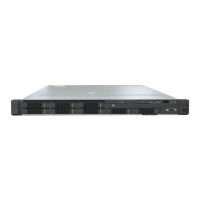⚫
The Intel Converged Boot Guard & Trusted Execution Technology (Intel CBnT)
prevents malicious software attacks based on hardware, prevents the firmware from
being maliciously modified, and prevents the execution of unauthorized boot blocks. It
also allows applications to run in their own independent space without being affected by
other software running in the system, thereby enhancing security.
⚫
The secure boot based on the chip RoT implements level-by-level firmware verification
starting from the hardware RoT and builds a complete secure boot chain.
⚫
The trusted platform module (TPM) and trusted cryptography module (TCM) provide
advanced encryption functions, such as digital signatures and remote authentication.
⚫
The following requirements in NIST SP 800-147B are met:
− The BIOS firmware digital signature update mechanism is supported. During the
upgrade, the digital signature is verified to prevent unauthorized BIOS firmware
upgrade.
− The flash security protection mechanism is supported to prevent unauthorized
modification of the flash memory in the OS.
The service port with NC-SI enabled supports the following configuration:
⚫
Configuring any network port on the FlexIO card 1, FlexIO card 2, or PCIe NIC (with NC-SI
enabled).
⚫
Enabling, disabling, and setting a virtual local area network (VLAN) ID for this port. The VLAN ID
is 0 and disabled by default.
⚫
Configuring IPv4 addresses (IPv4 address, subnet mask, and gateway) and IPv6 addresses (IPv6
address, prefix length, and gateway) for this port.
Energy Efficiency
⚫
The server supports 80 Plus Platinum/Titanium PSUs of different energy efficiency
levels. The PSU efficiency reaches 96% at 50% load.
⚫
Active/standby power supply and HVDC power supply are supported, improving the
efficiency of the power supply system.
⚫
Efficient voltage regulator-down (VRD) power supplies for boards minimize the energy
loss from DC/DC power conversion.
⚫
Area-based, Proportional-Integral-Derivative (PID) intelligent fan speed adjustment and
intelligent CPU frequency scaling optimize heat dissipation and reduce overall system
power consumption.
⚫
The improved thermal design with energy-efficient fans ensures optimal heat dissipation
and reduces system power consumption.
⚫
The server is protected with power capping and power control measures.
⚫
Staggered spin-up of drives reduces the server boot power consumption.

